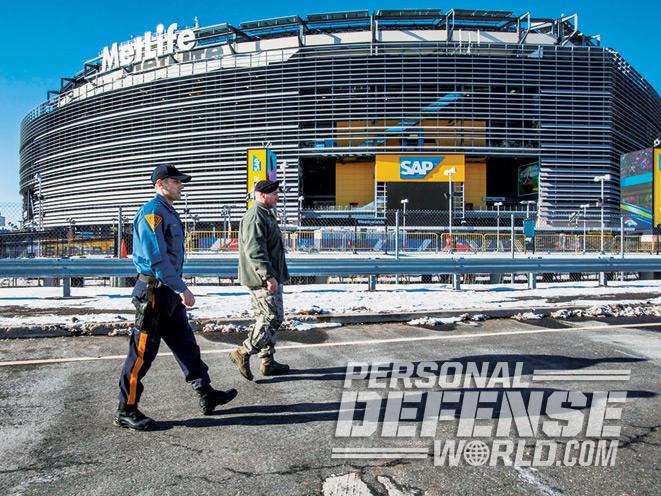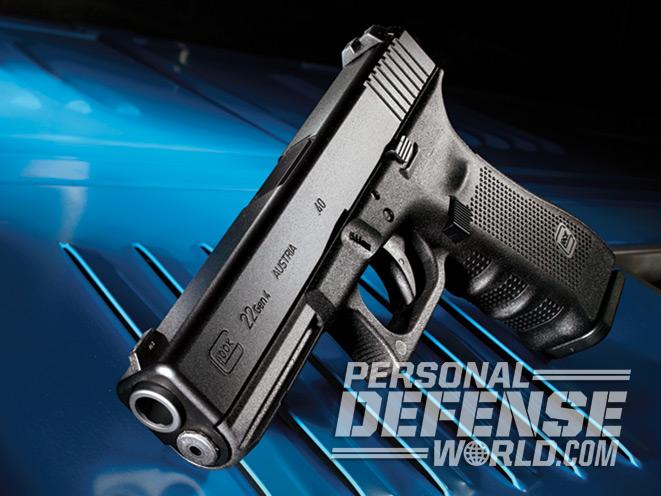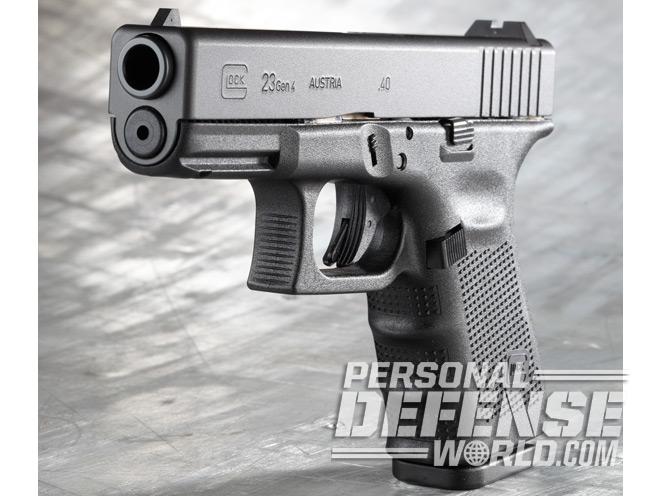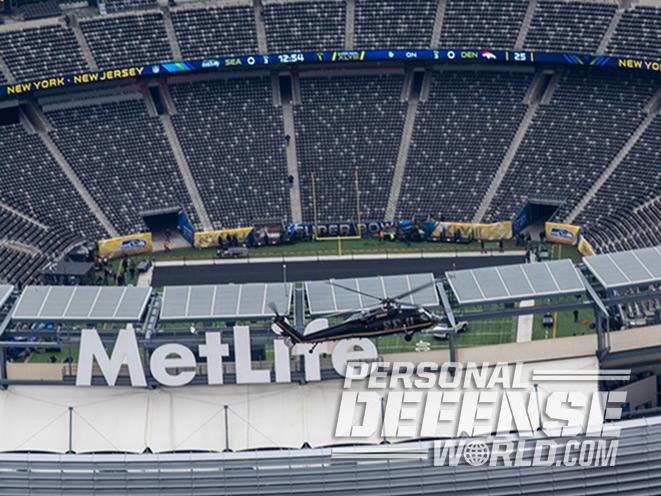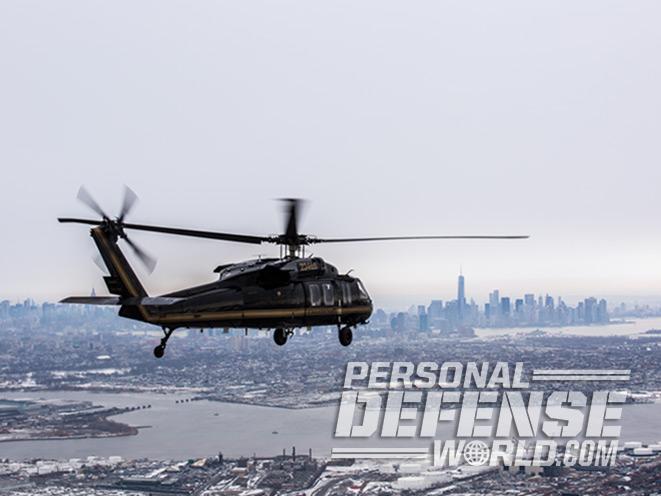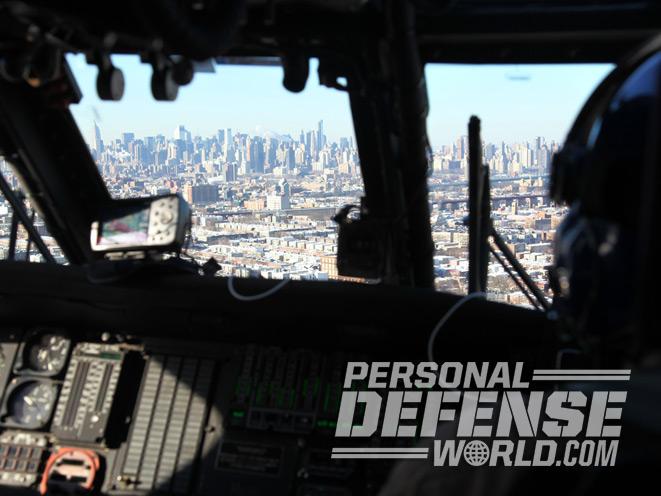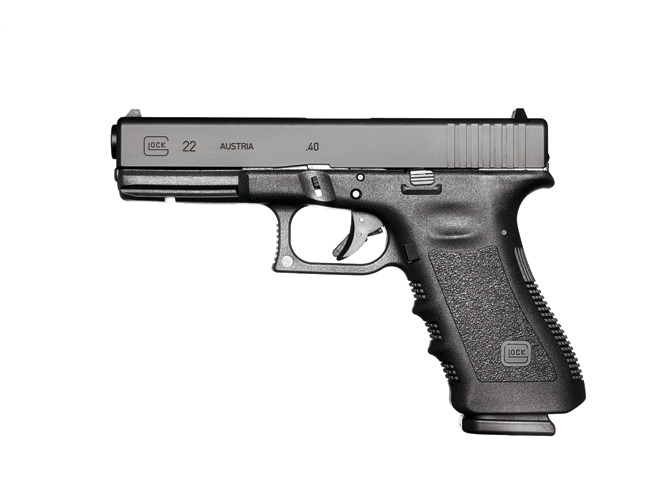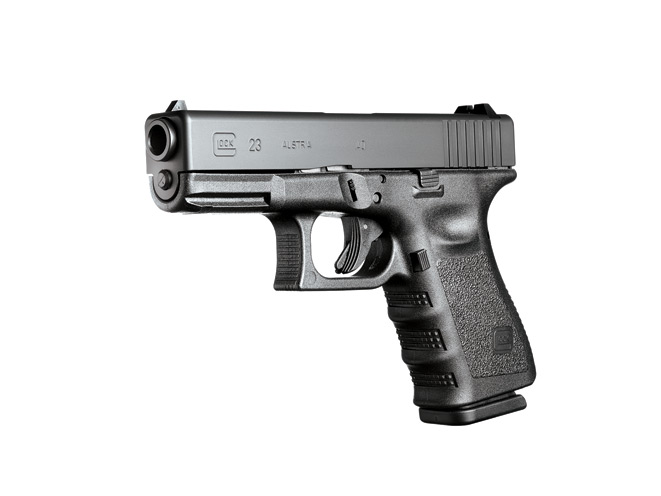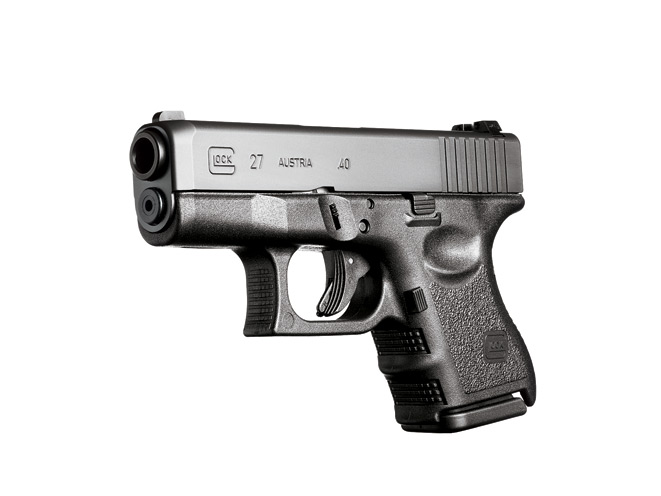The Super Bowl is super for a reason—it’s one of the largest, most widely viewed events held in the United States. To make 2014’s Super Bowl XLVIII and its surrounding events happen without a hitch required planning, preparation, training, management, communication and monitoring on a super-large scale.
Responsibility for much of the planning falls at the feet of the law enforcement agencies tasked to keep the event safe. Attracting hundreds of thousands of attendees—from celebrities to media to fans to the athletes themselves—the Super Bowl and its offshoot events can be among the most difficult venues to protect.
Last year, the Super Bowl’s footprint was extensive, covering locations in two states—New York and New Jersey. Added to this was the transportation infrastructure necessary to get teams, talent, fans and supporters to and from the venues using planes, trains, boats, buses and cars.
Advertisement — Continue Reading Below
Of the many LE agencies tasked to keep Super Bowl XLVIII super-safe, most were carrying one weapon—a GLOCK.
Multi-Agency Coordination
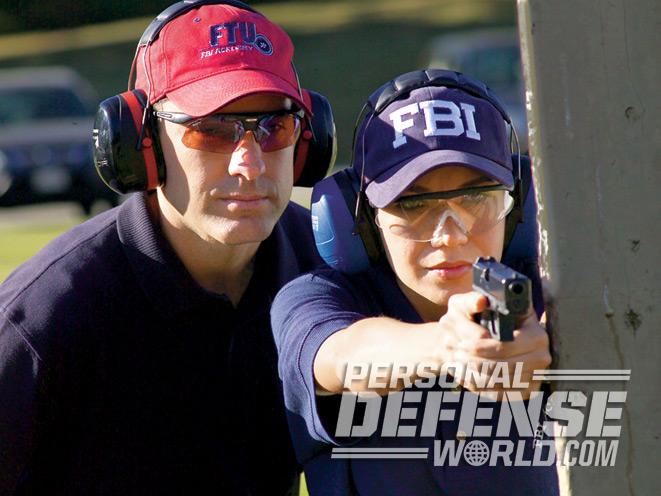
Security for the Super Bowl was coordinated by an alphabet soup of local, state and federal agencies. Each agency utilized its own gear. According to GLOCK, over 65 percent of U.S. law enforcement agencies use GLOCKs as their duty weapons. That fact was on full display at Super Bowl XLVIII, where many of the agencies involved brought GLOCKs to bear on a unique, high-profile and asymmetrical environment.
Advertisement — Continue Reading Below
RELATED: Hollywood Heroes – 24 Movies & TV Shows Featuring GLOCK Pistols
Federal Bureau of Investigation (FBI): As of May 31, 2013, the FBI employs 35,902 employees, which includes 13,785 special agents and 22,117 support professionals, such as intelligence analysts, language specialists and scientists. During the Super Bowl, the FBI was tasked as one of the main agency coordinators, and it brought to bear its immense resources to help protect the game.
The FBI fielded its Mobile Command Posts, Evidence Recovery Teams, technology assets and its SWAT team. Every agent there was armed with a GLOCK, which, in the form of the Glock 22 or Glock 23, is the agency’s standard-issue duty sidearm. Once an agent enters the FBI Academy in Quantico, Virginia, they spend thousands of hours honing and perfecting their shooting skills. Due to their unique criminal and terrorism investigation role, FBI agents train to be very proficient with their GLOCK pistols.
Advertisement — Continue Reading Below
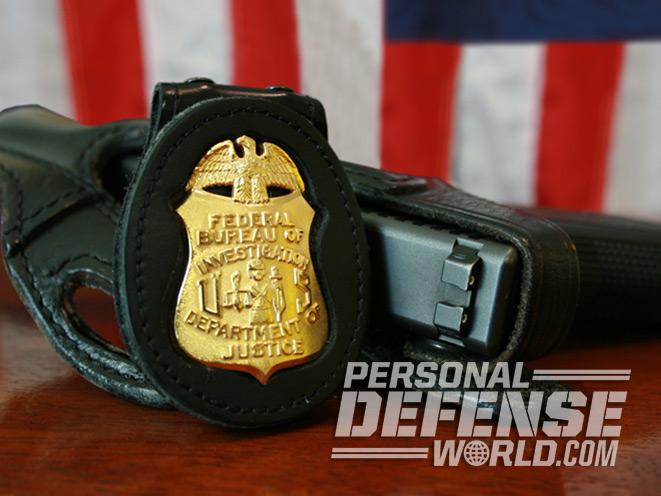
GLOCK introduced the Glock 22 .40 in 1990 in order to close the gap between the heavy .45 AUTO cartridge and the internationally proven 9×19. GLOCK was the first manufacturer to make a handgun chambered in this effective round widely accessible to law enforcement agencies. Today, the FBI and other police agencies across the U.S. carry the 15-round Glock 22.
The Glock 23 gives the FBI a compact weapon for either open or concealed carry. The Glock 23 survived durability tests and use by U.S. law enforcement agencies and has repeatedly demonstrated its durability and reliability in even the most unfavorable conditions.
Advertisement — Continue Reading Below
In February of 2014, Jimmy Lee Dykes shot and killed a school bus driver and abducted and held hostage a five-year-old boy in a homemade bunker. The FBI Hostage Rescue Team (HRT) was called in as the hostage situation started to deteriorate. These federal agents breached a fortified door of the homemade bunker and in the hundredths of a second’s skirmish, through the smoke and confusion, an agent engaged the threat. Sources indicate that the weapon used to end that threat was a GLOCK.
With their enormous responsibility for protecting and defending the American way of life, FBI agents apparently feel most comfortable carrying a GLOCK.

Bureau of Alcohol, Tobacco, Firearms and Explosives (BATFE): Most people have heard of Eliot Ness and his efforts at bringing the gangster Al Capone to justice. What most don’t realize is that Eliot Ness, who served in federal law enforcement for 10 years, was actually a legacy BATFE agent. In 2003, under the Homeland Security Act, the BATFE was moved from the Treasury Department to the Department of Justice, where it enforces laws related to alcohol, tobacco, arson, guns and explosives.
Advertisement — Continue Reading Below
RELATED: 3 Pro Trainers on Why GLOCK Pistols are Safe, Easy to Use & Reliable
In 2010, as GLOCK reported, “GLOCK was officially named the chosen duty weapon for the agency! This choice comes after rigorous testing and evaluation, including a 20,000-round endurance shoot and brutal environmental testing. The BATFE selected the GLOCK 22 Gen4 and GLOCK 27 .40 semi-automatic pistols as its choice of duty weapons, demonstrating that GLOCK earned their trust and confidence!”
Unlike earlier models, the Glock 22 Gen4 features modular backstraps that allow the user to instantly customize the grip to better fit his or her hand size. The Glock 27 is a small, light, accurate and powerful weapon. It was built to serve as a backup, undercover or off-duty weapon. At 6.49 inches long overall, 5.39 inches high and weighing 27 ounces loaded, it is a great backup option for any officer.
Advertisement — Continue Reading Below
For the 2014 Super Bowl, the BATFE brought its vast explosives expertise to check for and investigate any instance of a “suspicious package.” Given the amount of people attending the Super Bowl, this was a daunting task, despite the measures taken to limit the amount of items allowed into MetLife Stadium.
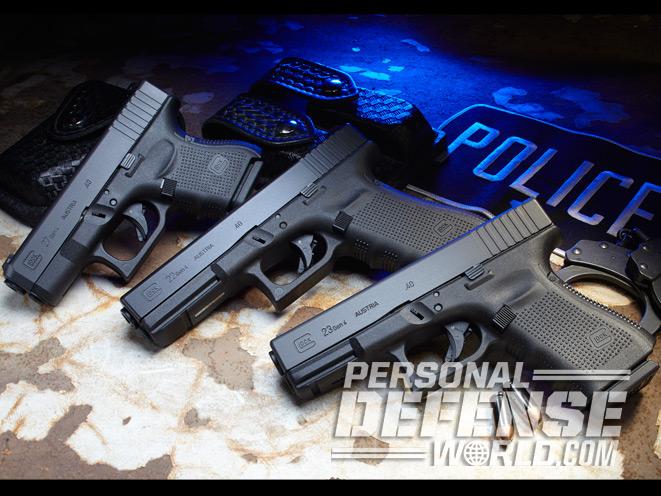
Drug Enforcement Administration (DEA): In July 1973, President Richard Nixon created the DEA in order to establish a single unified command to combat “an all-out global war on the drug menace.” At its outset, the DEA had 1,470 special agents and a budget of less than $75 million. Today, the DEA fields nearly 5,000 special agents and has a budget of $2.02 billion.
Although not directly involved in the Super Bowl security efforts, the DEA continued to conduct operations in and around the New York and New Jersey area in order to stem the flow of illegal narcotics into the tri-state area. Its efforts helped keep the Super Bowl a family-friendly event free from traffickers. For its issued weapons, the DEA uses the Glock 22, Glock 23 and Glock 27 in .40 caliber.
Advertisement — Continue Reading Below
U.S. Marshals Service: Among the duties assigned to the U.S. Marshals Service are the apprehension of more than half of all federal fugitives, protection of the federal judiciary, operation of the Witness Security Program, transportation of federal prisoners and seizure of property illegally obtained by criminals—and, in 2014, helping secure Super Bowl XLVIII.
In 2012, the Marshals averaged 337 fugitive arrests every day and 123,006 for the entire year, putting dangerous criminals behind bars and helping keep our nation’s streets safe. At the Super Bowl venue, the Marshals Service maintained its proud legacy of keeping criminals at bay. With every mission they perform, they carry a Glock 22 or Glock 23 in .40.
Game Day
Advertisement — Continue Reading Below
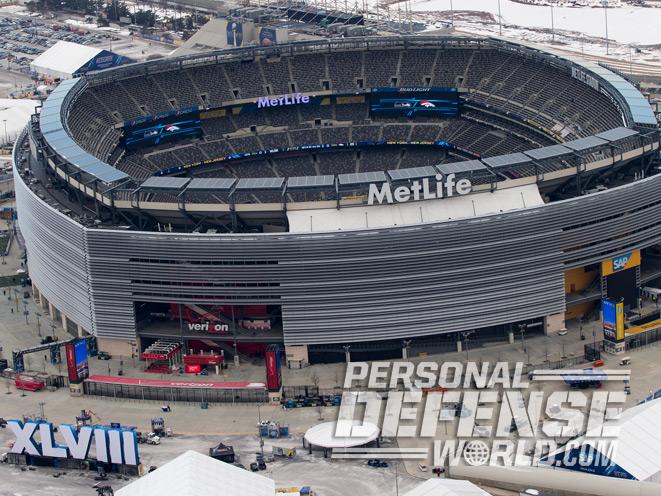
Once the Super Bowl was declared a Level One SEAR (Special Event Assessment Rating) event, New Jersey, which owns the land the stadium sits on, constructed a 2.5-mile cordon of steel fencing to secure the stadium perimeter. From that point forward, a credentialing protocol was initiated, and no one could get into or out of the stadium without that credential.
RELATED: Massad Ayoob – You Got A GLOCK. Now What?
“A 24-hour FBI command center was established to monitor the latest counterterrorism intelligence,” said Aaron Ford, head of the FBI’s Newark office. Ford told WPIX-TV the effort was “an unprecedented collaboration” between 35 agencies.
Helicopters were launched and enforced a temporary no-fly zone around New Jersey’s MetLife Stadium on Super Bowl Sunday, with F-16s based in Atlantic City ready to scramble if an unauthorized aircraft entered the restricted airspace.
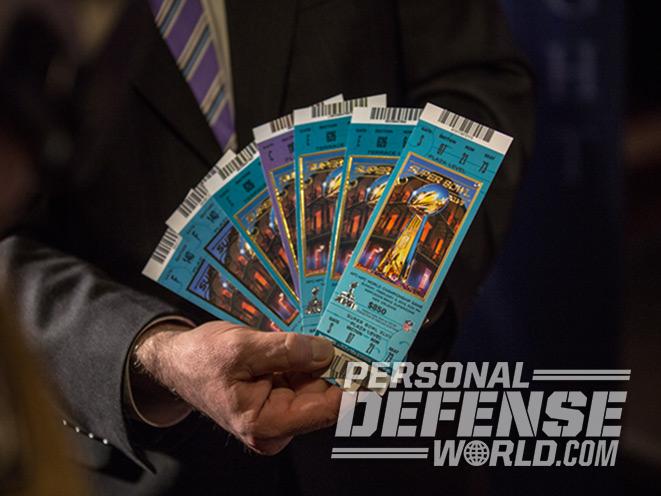
Bomb-sniffing dogs swept the entire stadium. Other K9s were used to patrol the trains and buses that brought approximately 30,000 of the 80,000-plus fans to the Super Bowl between the Denver Broncos and Seattle Seahawks.
The TSA also added 200 screeners at Newark to handle the larger volume of travelers, and TSA agents from LaGuardia Airport screened train passengers at New York’s Penn Station and New Jersey’s Secaucus Junction on Super Bowl Sunday. Other TSA screeners helped handle the arriving fans at the stadium. “Only people who had a valid Super Bowl ticket were allowed to pass through the security checkpoint and board a train,” said John Durkin, special agent in charge of the TSA Newark field office. Officials estimated between 12,000 and 15,000 passengers rode the train between the Secaucus station and the stadium.
Once kickoff occurred, over 5,000 law enforcement officers, many of them with GLOCKs at the ready, remained on hand to ensure that the public was safe and that the game remained super for all to see.
